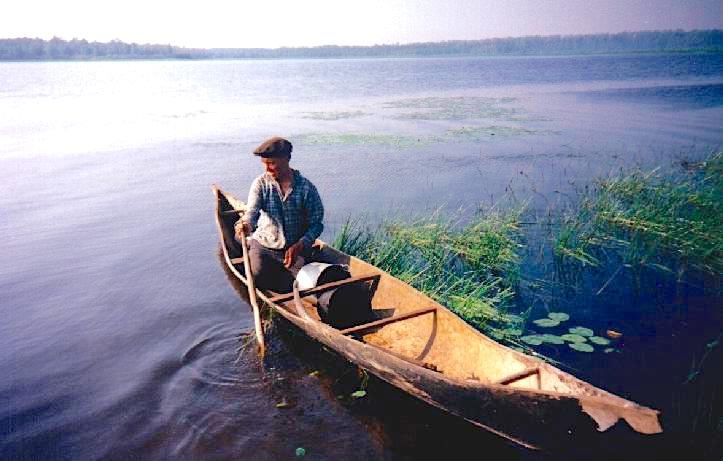Comprehensive Documentation and Analysis of Two Endangered Siberian Languages: Eastern Khanty and Southern Selkup

Petro Milimov (kuchurki ‘chipmunk’), in Ozernoe village (Tokhpukhol), Tomsk region, Western Siberia, Russian Federation. (Photographer: Andrey Filchenko) Landing page image for the collection ‘Comprehensive Documentation and Analysis of Two Endangered Siberian Languages: Eastern Khanty and Southern Selkup’. Click on image to access collection.
| Language | Eastern Khanty, Southern Selkup |
| Depositor | Andrey Filchenko, Balthasar Bickel, Sergey Kovylin, Natalia Maksimova |
| Affiliation | Tomsk State Pedagogical University |
| Location | Russian Federation |
| Collection ID | 0164 |
| Grant ID | MDP0259 |
| Funding Body | ELDP |
| Collection Status | Collection online |
| Landing Page Handle | http://hdl.handle.net/2196/25344716-bd77-43d2-930f-dc2ddaaa96ed |
Showreel
Summary of the collection
The languages of the collection, Eastern Khanty and Southern Selkup, (i) are severely endangered: each numbers under 20 last proficient speakers; (ii) have existing legacy data in Tomsk with limited access, which is to be improved as a result of the project; (iii) are characterized by areal contact contiguity; (iv) are ethnographically consistent, with the last traditional culture practitioners. The cooperative project between the University of Zurich and Tomsk State Pedagogical University builds on extended research experience with the respective languages, and relevant documentation methodology. The project pursues documentation and analysis of two endangered languages of Western Siberia, Russia in order to gain insight into local processes of area formation.
Special characteristics
The important factor at play in the target area is considerable local variation and contact among genealogically related and unrelated languages. The situation is dominated by a general divide between the taiga forest-swamp ecosystem in the south and the tundra plains in the north, which also marks a traditional occupation and cultural divide between forest hunter-fisher-gatherers in the south and semi-nomadic reindeer herders in the north. These ecosystemic, occupational and cultural boundaries cross-cut language areas (Khanty, Selkup, etc.), but tend to generally coincide with dialectal divisions, e.g., Eastern Khanty (south) vs. Western Khanty (north), Northern vs. Southern Selkup, etc. The information in the Ethnologue relies on the more documented and better preserved Western Khanty dialects, and this does not adequately represent the state and context of the Eastern Khanty dialects (the same refers to Selkup). Importantly, current population statistics does not reflect the numbers of speakers. Most Western Siberian indigenous communities are linguistically assimilated Russian monolinguals, with the remaining minority being bi- or multi-lingual and with varying degrees of competency in their mother tongues. The geographical references are to be seen as selected single locations from the target dialect area, where field locations (language communities) can be separated by 200-500 km. In this context, interaction is often more frequent between representatives of genealogically remote from each other but geographically adjacent language communities (Khanty-Selkup, Selkup-Ket, Selkup-Chulym Turkic) than between the communities within the same phyla. This is particularly true of Eastern Khanty and Central Selkups who populate the same river basins, and are distant from geneological “relatives”.
Collection history
The two languages of this documentation project were chosen on the basis of the following criteria:
- Language data accessibility: existing legacy data on the languages spoken in the isolated communities is meager and hard to access, which will be improved significantly as the result of the project.
- Degree of endangerment: both languages are severely endangered with poor prospects for survival.
- Ethnographic consistency: the project documents the last surviving native language speakers and traditional culture practitioners in the area.
- Areal contact contiguity: the study focuses on cross-phyla language-contact phenomena.
Effectively, the area of Eastern-most Khanty dialects and Southern/Central Selkup (the least described and most endangered varieties) remains the white spot in the ongoing documentation initiatives. This situation will be remedied as a result of the project using the existing legacy data (in Tomsk) on these dialects, and the available field and analysis experience of the researchers.
In addition to the described cooperative nature of the project, its international team enjoys collaboration with the leading experts in individual areas of specialization from 3 more institutions: Dr. Beata Wagner-Nagy from the University of Hamburg; kand. Valentin Gusev from the Institute of Linguistics of the Russian Academy; and Dr. Sven Grawunder of the Max Plank Institute for Evolutionary Anthropology in Leipzig.
Other information
This collection contains two sub collections: one collection for Eastern Khanty and one collection for Southern Selkup. The location of the Eastern Khanty community is shown on the map (longitude 59.033489; latitude 80.788888). The Southern Selkup community is not shown on the map (longitude 58.713329; latitude 81.419958).
Acknowledgement and citation
To refer to any data from the collection, please cite as follows:
Filchenko, Andrey, Balthasar Bickel, Sergey Kovylin & Natalia Maksimova. 2016. Comprehensive Documentation and Analysis of Two Endangered Siberian Languages: Eastern Khanty and Southern Selkup. Endangered Languages Archive. Handle: http://hdl.handle.net/2196/00-0000-0000-0000-A922-3. Accessed on [insert date here].


